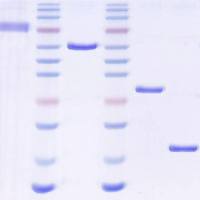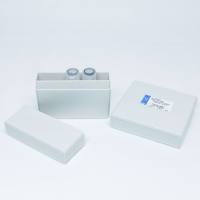Synthesis and Use of DNA Containing a 5-Bridging Phosphorothioate as a Suicide Substrate for Type I DNA Topoisomerases
互联网
561
Type I DNA topoisomerases change the linking number of supercoiled DNA by carrying out orcheastrated cleavage and ligation reactions involving phosphodiester bonds. Strand cleavage is not the result of phosphodiester hydrolysis, but the result of transesterification of an active-site tyrosine, creating a 3′-DNA covalent intermediate and a 5′-terminus (5′-OH). Strand ligation occurs during a second transesterification event when the 5′-OH displaces the enzyme (see Fig. 1 ). A change in DNA linking number results when strand unwinding occurs between these cleavage and ligation reactions.


Fig. 1. Rationale for suicide substrate design. A phosphodiester linkage at the site of strand cleavage/ligation and an active site tyrosine are diagrammed on the left; the cleaved DNA and the 3′-phosphotyrosyl enzyme covalent complex are diagrammed on the right. In the unmodified phosphodiester, X represents oxygen; for the 5′-bridging phosphorothioate (OPS DNA), X represents sulfur. Chiral phosphorothioate diesters, in which one of the nonbridging oxygens is replaced by sulfur (not diagrammed), have been extensively used as mechanistic probes in enzymology and should not be confused with the achiral 5′-bridging phosphorothioate diesters described here.









